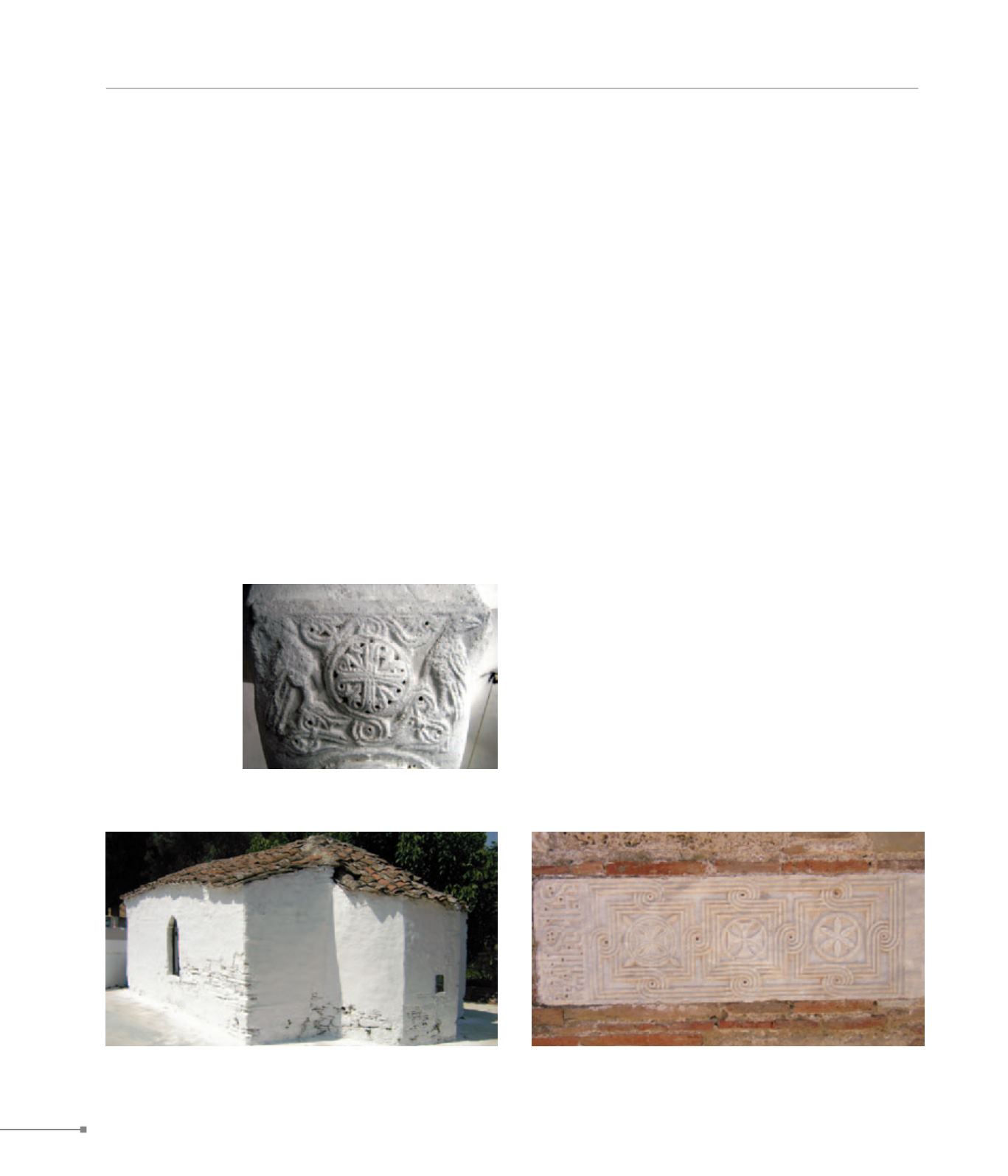
Vounoi.
Aghios Loukas.
EUBOEA
170
185. Aghios Loukas, church of Aghios Loukas, sculpture. (Άγιος Λουκάς,
γλυπτό στον ομώνυμο ναό)
184. Paramerites, Saint Andrew (Παραμερίτες, Άγιος Ανδρέας)
184. Paramerites,
Saint andrew, capital
(Παραμερίτες, Άγιος
Ανδρέας, κιονόκρανο)
185.
Aghios Loukas.
In the village of Aghios Loukas stands the cross-vaulted church
of the Metamorphosis (13th-14th c.). The masonry of the parish
church of Saint Luke features reused sculptures and inscrip-
tions originating from an earlier, Byzantine church on the same
site.
178.
Vounoi.
At the small village of Vounoi are two cross-vaulted churches:
Aghioi Apostoloi, with wall decoration of the late 14th or early
15th c.; and the Metamorphosis, with sculptures and other ar-
chitectural elements incorporated on the walls. The ruined tow-
ers at Vounoi (Kato Steni, Amphithea, Mistro), and at Skounteri,
form a dense fortification network in the foothills of Mount Dirfi.
179.
Amphithea.
Ruined tower survives.
181.
Pissonas.
Near the Post-Byzantine church of Saint George, part of an Ear-
ly Christian mosaic floor is preserved by burial. In the centre of
the village stands the Late Byzantine Tower of Mostras.
182.
Mistro.
Ruined tower survives.
183.
Trachili.
Ruined tower survives.
184.
Paramerites.
Saint Andrew was originally a simple four-columned funerary
naiskos, cross-in-square with narthex and dome (second half of
12th c.). Subsequent repairs caused further deterioration. There
is interesting sculpted decoration on the main sides of the four
capitals.
180.
Vatontas.
Excavational investigation has yielded ruins of the three-aisled
Early Christian basilica of Aghia Paraksevi, from which survive
numerous architectural components. Remnants of later ma-
sonry attest to the subsequent construction of a smaller church
after the basilica was destroyed.


